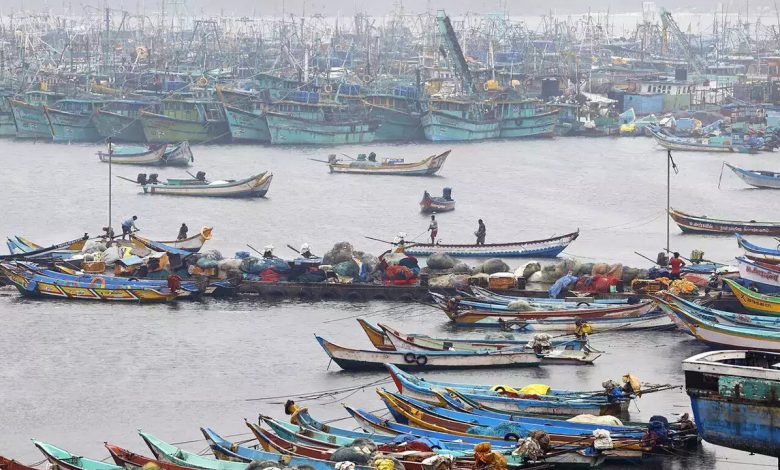Daily Current Affairs for UPSC
Sagar Parikrama Phase III
Syllabus- Government Policies and Interventions [GS Paper 2]

Context- The Department of Fisheries, Ministry of Fisheries, Animal Husbandry, and Dairy, and National Fisheries Development Board launched the Sagar Parikrama Phase III program on February 19, 2023, from Surat, Gujarat.
Key Highlights-
- The program’s primary goals are to spread the word about various fisheries-related schemes and programs, encourage responsible fishing practices with an emphasis on sustainable balance, and safeguard marine ecosystems.
- The program’s Phase I began in March 2022 in Mandvi and ended on March 6, 2022, in Porbandar, Gujarat.
- Fish farmers and fishermen received Kisan Credit Card (KCC) cards.
- Additionally, it was announced that the Satpati Fish Market would be opened in accordance with the most recent standards.
Sagar Parikrama
- In order to demonstrate solidarity with all fisherfolk, fish farmers, and concerned stakeholders, it is a navigation journey that will be carried out in all coastal states and UTs along a predetermined sea route.
- Significance:
- It will concentrate on maintaining a healthy equilibrium between the use of marine fisheries resources for the nation’s food security, the livelihoods of coastal fisher communities, and the preservation of marine ecosystems.
What is the situation with India’s fishing industry?
-
- India is the world’s second-largest aquaculture producer of fish.
- With a 7.7% share of the world’s fish production, India is the fourth largest fish exporter.
- Additionally, India is first in the world for inland capture fish production and third overall.
- Over 2.8 crore people in the country currently rely on this industry for their livelihood.
- Initiatives pertaining to the Fishing Industry:
-
-
- The Fisheries and Aquaculture Infrastructure Development Fund (FIDF) and the Pradhan Mantri Matsya Sampada Yojana Palk Bay Scheme are two examples of government initiatives related to India’s fisheries.
-
- Challenges Related to India’s Fishery Sector:
-
- Illegal, Unreported, and Unregulated (IUU):
- IUU fishing is a significant issue in India’s fishing industry that frequently goes unnoticed.
- Fish stocks may decline as a result of IUU fishing, but it also disadvantages legitimate fishermen.
- Insufficient infrastructure:
- Due to a lack of transportation, cold storage, processing facilities, and adequate infrastructure, the Indian fishery industry suffers from post-harvest losses and is unable to access markets with higher values.
- Illegal, Unreported, and Unregulated (IUU):
- Access to Credit Is Limited:
- In India, small-scale fishermen frequently have trouble getting credit, which prevents them from investing in their businesses and improving their standard of living.
- Changes in climate:
- Changes in fish distribution and reproduction rates as a result of climate change are affecting India’s fishing industry.
- Additionally, it increases the likelihood of natural disasters like cyclones and flooding, which can cause damage to fishing vessels and infrastructure.
Way Forward
- Promoting Eco-Friendly Fishing: The government can promote responsible fishing methods and establish quotas and restrictions to prevent overfishing to promote sustainable fishing practices. This will safeguard fishermen’s livelihoods and ensure the Clongevity of fish stocks.
- Regulating IUU Fishing More Toughly: To combat unreported, illegal, and unregulated fishing, the government should tighten its regulations. This may include penalties for those who break the law and measures like satellite monitoring of fishing boats.
- Construction of Infrastructure: The quality of fish products will rise and post-harvest losses will decrease if infrastructure investments are made in transportation, cold storage, and processing facilities.





.png)



